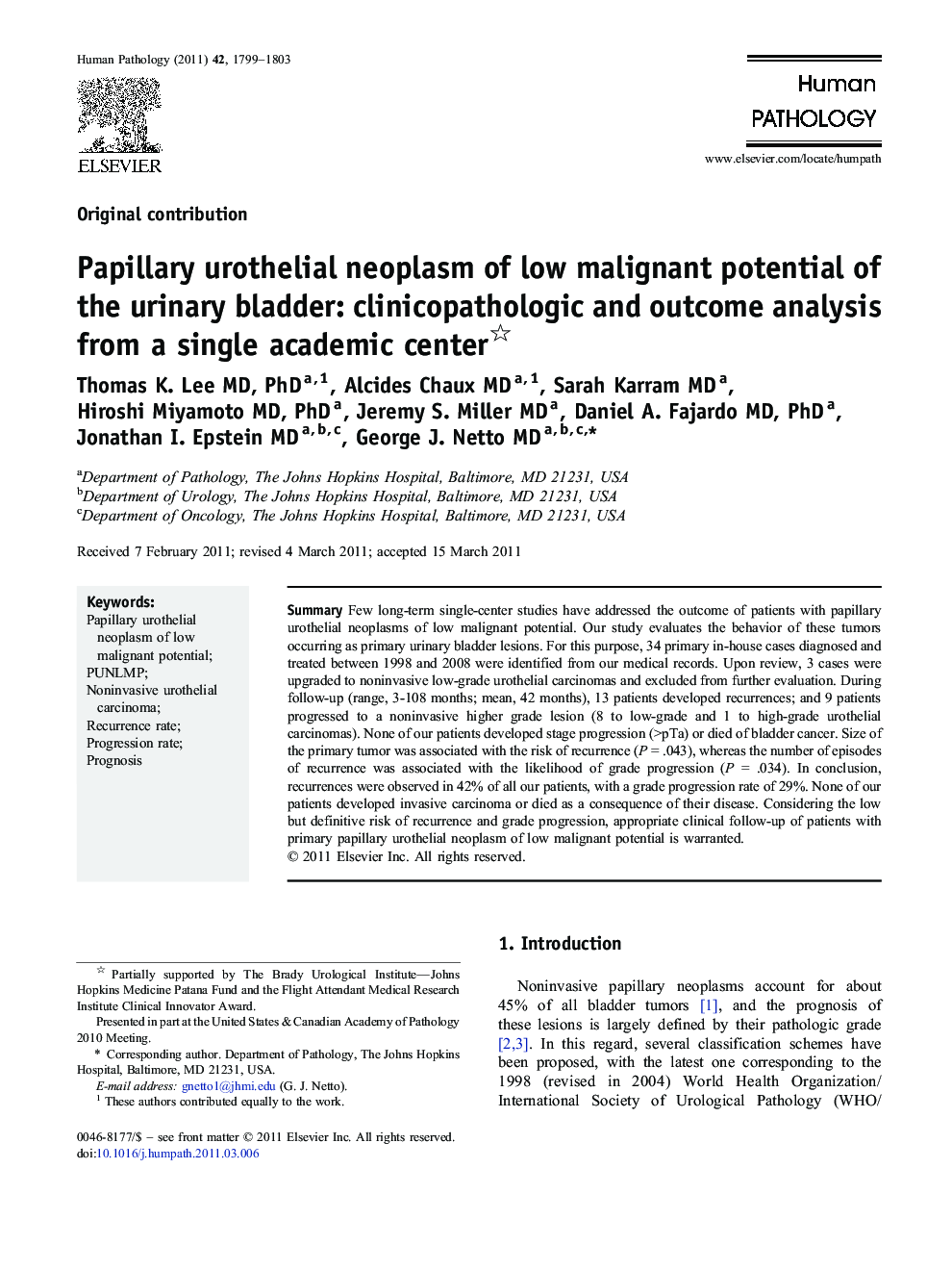| Article ID | Journal | Published Year | Pages | File Type |
|---|---|---|---|---|
| 4133691 | Human Pathology | 2011 | 5 Pages |
SummaryFew long-term single-center studies have addressed the outcome of patients with papillary urothelial neoplasms of low malignant potential. Our study evaluates the behavior of these tumors occurring as primary urinary bladder lesions. For this purpose, 34 primary in-house cases diagnosed and treated between 1998 and 2008 were identified from our medical records. Upon review, 3 cases were upgraded to noninvasive low-grade urothelial carcinomas and excluded from further evaluation. During follow-up (range, 3-108 months; mean, 42 months), 13 patients developed recurrences; and 9 patients progressed to a noninvasive higher grade lesion (8 to low-grade and 1 to high-grade urothelial carcinomas). None of our patients developed stage progression (>pTa) or died of bladder cancer. Size of the primary tumor was associated with the risk of recurrence (P = .043), whereas the number of episodes of recurrence was associated with the likelihood of grade progression (P = .034). In conclusion, recurrences were observed in 42% of all our patients, with a grade progression rate of 29%. None of our patients developed invasive carcinoma or died as a consequence of their disease. Considering the low but definitive risk of recurrence and grade progression, appropriate clinical follow-up of patients with primary papillary urothelial neoplasm of low malignant potential is warranted.
